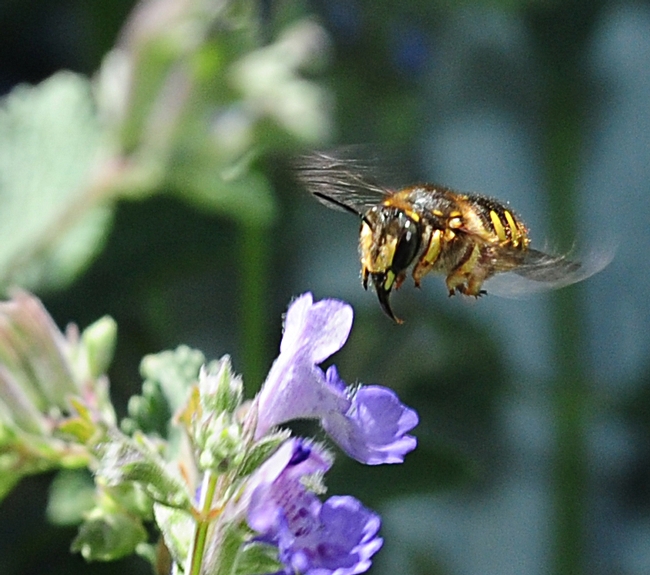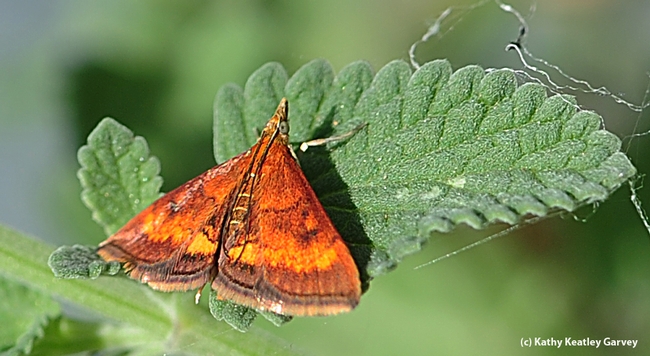Posts Tagged: Nepeta
How Fast Can a Honey Bee Fly?
How fast can a honey bee fly? We captured these photos today of a honey bee nectaring on catmint (genus Nepeta). The bee was moving fast. To blur the wings, we set the shutter speed at 1/640 of a second with an f-stop of 13 and IS0 of 800. But...

A honey bee can beat its wings 230 times every second. (Photo by Kathy Keatley Garvey)

Honey bee spinning like a top. (Photo by Kathy Keatley Garvey)
European Wool Carder Bees Aren't Slow Pokes
Don't ever call the European wool carder bee (Anthidium manicatum) a slow poke. It's not "as fast as a speeding bullet" (Superman), but close. The males, quite territorial, chase away other pollinators, including honey bees, sweat bees and...

European wool carder bee darts through catmint. (Photo by Kathy Keatley Garvey)

Mating European wool carder bees. (Photo by Kathy Keatley Garvey)

After mating, these European wool carder bees broke away at lightning speed. (Photo by Kathy Keatley Garvey)
A Day in the Life of a Single Worker Bee
A day in the life of a single worker bee... A honey bee tumbles off the flowering catmint (Nepeta) and struggles to right herself. Her wings tattered, her body battered, she does not buzz away. Perhaps she is approaching the end of her six-week...

Honey bee tumbles off a flowering catmint and lands on a leaf. (Photo by Kathy Keatley Garvey)

Tattered wings of a honey bee. (Photo by Kathy Keatley Garvey)

Honey bee thrusts out her proboscis (tongue). (Photo by Kathy Keatley Garvey)
Let It Bee
Let it be, let it be, let it be, let it beWhisper words of wisdom, let it be--Paul McCartney When Paul McCartney of The Beatles wrote "Let It Be," released in 1970, he wasn't writing about honey bees. No, he was actually recounting what his...

Honey bee is snared in the web of a garden spider. (Photo by Kathy Keatley Garvey)

Honey bee struggles to free herself. (Photo by Kathy Keatley Garvey)

The spider edges closer. (Photo by Kathy Keatley Garvey)

Just as the spider reaches her, the photographer frees the bee. (Photo by Kathy Keatley Garvey)
In Mint Condition
if you're growing plants in the mint family, Lamiaceae--you know, the plants with the square stalks and opposite leaves--you may see a very tiny reddish-orange visitor. It's so tiny that it's smaller than the leaf of a catmint (Nepeta). Its wing...

What's behind the catmint leaf (Nepeta)? (Photo by Kathy Keatley Garvey)

This is a California Pyrausta Moth (Pyrausta californicalis) on catmint. (Photo by Kathy Keatley Garvey)

Close-up of California Pyrausta Moth (Pyrausta californicalis) on catmint. (Photo by Kathy Keatley Garvey)

